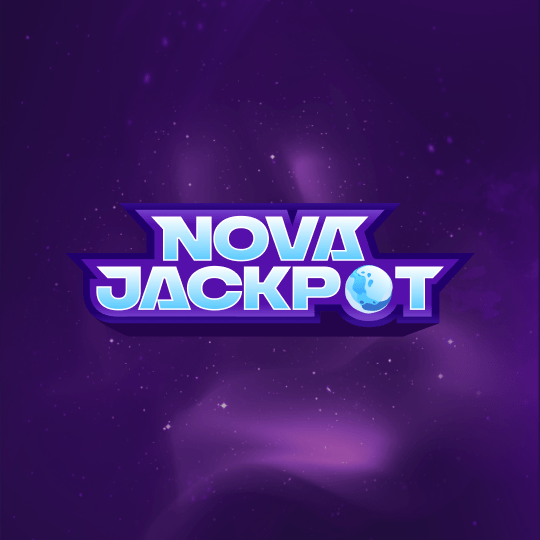Best Aussie Casinos Online (June 2025)
Choose your real money casino below. Trusted, safe, secure. Topio Networks Casinos.

$8,000 + 500 FS Welcome Offer
- New Casino Online Australia
- Blazing fast payments
- Real money online casino

up to 4000 AUD + 300FS
- Lightning-Fast Payouts
- Top online casino Australia
- Aussies’ Top Pick for Gaming

UP TO AU$20,000 + 500 FS
- Best Online Casino in Australia
- Recommended Online Pokies
- Real Money Online Casino

up to 10.000 AUD + 500 free spins
- Australian Online Casino
- Best online pokies
- Aussie casino

450% up to AUD $5,500 + 500 Free Spins
- Free spins bonuses
- Online pokies
- 24/7 Aussie customer support

up to A$8,000 + 400 Free Spins
- Popular Australian Casino Online
- The best online pokies
- Quick cashouts 24/7

250% up to €3,000 + 350 Free spins
- Safe online casino
- Secure & quick payments
- Best online pokies 2025

$1000 Welcome Bonus for aussies
- Australian Online Casino
- Heaps good welcome bonus
- New casino for June!

Welcome Pack Up to $5,555 + 243 Free Spins
- Best new online casino Australia
- Best live dealer games
- All popular pokies

casino bonus Up to $5000 + 500 Free Spins
- New Aussie Casino 2025
- Huge welcome bonus
- Great for mobile gaming

275% Up to AU$5,000 + 150 FREE SPINS + 10 NDB FS on registration + 10 NDB FS on email confirmation
- Secure online pokies
- Great for Aussies
- Heaps good real money games

500% up to 2,500 AUD + 100 Free Spins
- Hot new Aussie casino
- Best Pokies Online
- Quick cashouts

100% up to $1000 + 100 free spins
- New Casino For Aussies
- All the popular games
- Many promotion & bonuses

225% up to AUS1000 + 275 FS
- New online casino Australia
- Real money games
- Fast payments & secure

240% up to AU$4100 + 300 free spins
- Secue Online Casino
- Easy & quick payments
- Recommended Casino Online

100% UP TO $10,000 + 100 FREE SPINS
- Top Casino Online 2025
- Great bonuses
- Best Pokies Online

up to $6000 + 325 fs on first 4 deposits
- New Aussie Casino
- Huge casino bonuses
- Popular casinogames

AU$450 / 0.003 BTC + 250 Free Spins
- Crypto Casino For Aussies
- Blazing fast payouts
- Great promotions & bonuses

AU$750 in bonus + 200 Free spins
- Online casino for Australia
- Popular pokies
- Top casino site 2025

250% up to 4000 AUD + 150 FS + 1 Bonus Crab
- Top Online Pokies for Aussies
- VIP Australian Casino
- Massive Casino Bonuses

250% up to $4,500 + 350 FS
- Great choice for Aussies
- Real money online casino
- Best casino bonuses

225% up to 2250AUD + 200FS
- Top choice for Aussie players
- Secure and fast payments
- Popular online casino games

50 Free SpiNs + 330% Bonus
- Heaps good online casino
- Excellent promotions
- Great online pokies

500AUD + 200 Free Spins
- New online casino Australia
- Best pokies
- Quick transactions & secure
About best online casinos Australia
| Secure & recommended online casinos in Australia | 10+ |
| Online pokies | 4000+ |
| Online roulette | Yes |
| Online blackjack | Yes |
| Online poker | Yes |
| No deposit bonuses | Yes |
| Deposit bonuses | Over $20.000 |
| Free spins without deposit | 25 Free spins |
| Free spins on deposit | +2000 |
| Banking options | Skrill, Visa, Mastercard, Paysafe Card, Direct wire transfers, Neosurf, |
| Responsible gambling | Yes |
| Accepts players från Australia | Yes |
Best Online Casinos in Australia: A Comprehensive Guide for 2025
Australia has long been a hub for gambling enthusiasts, and the digital era has only expanded this passion into the online space. With a plethora of online casinos available to Australian players, choosing the best ones can be a daunting task. This guide will help you navigate the options by highlighting the best online casinos in Australia for 2025, based on factors such as game variety, security, bonuses, and customer service.
Online Casino Australia Sites for Real Money 2025
Looking for the best online casino Australia sites? Discover a few games that are particularly enjoyable at these online casinos. Each au online casino offers unique promotions, game variety, and user experiences tailored for Australian players. We cover the top real money online casino sites, legal tips, and where to spin the hottest online pokies. Check out the best casinos for Aussie players and pick your next real money casino. Trusted, safe, and built for fair dinkum fun. Topio Networks Australian Casinos.
The Good Stuff – Why Aussies Love Online Casinos
Most of these online casinos are made with Aussie players in mind. You can chuck in your dollars using Australian dollars (AUD), pay with stuff like Neosurf or even crypto, and they’ll often throw in a bonus that’ll make your jaw drop. It’s smooth sailing from sign-up to cash out.
Heaps of Pokies & Games
We’re talkin’ thousands of games – from the old-school one-armed bandits to flashy new video pokies, blackjack, roulette, and even live dealers if you’re keen for a more Vegas vibe. Australian online casinos offer a diverse selection of games and various incentives, ensuring you’ll never run out of stuff to spin or shuffle.
Welcome Bonuses That Slap
First-time player? Mate, you’re in for a treat. Most casinos hand out massive bonuses – some up to AU$20,000 plus hundreds of free spins. VIP players can also enjoy exclusive perks like birthday bonuses, enhancing their overall gaming experience. Even no deposit spins just for signing up. It’s like walking into the pub and getting a free round.
Fast Payouts – No Waiting Around
No one likes waiting to get paid, right? The best Aussie online casinos offer fast payouts and a variety of banking options, shooting your winnings back quicker than a roo on the run – sometimes in under an hour if you use the right method.
Safe As Houses
The best Australian casinos are properly licensed and run with bank-level security, ensuring they are safe and secure for players. They use encryption tech so your info doesn’t end up in the wrong hands, and the games are regularly tested to make sure you’re not getting stitched up.
Banking Options Galore
Online casinos cater to specific player needs and preferences by offering a variety of banking options. From your trusty Visa or Mastercard to e-wallets and even Bitcoin, there’s a way to get your cash in and out. Aussie-friendly methods like POLi and Neosurf are common too – easy as.
Smooth on Mobile
Love a flutter on the go? These mobile casinos are built for phones and tablets, offering an enhanced gameplay experience with touch-friendly interfaces. Whether you’re on the train or the couch, everything plays like a dream.
Responsible Online Gambling Tools
If you’re worried about going overboard, most sites have tools to help you stay in control – like setting limits or taking a breather. And if things get a bit rough, you’ve got Online Gambling Help just a click away.
They all offer strong game libraries, generous bonuses, and top-notch customer service—plus they accept Aussie dollars.





